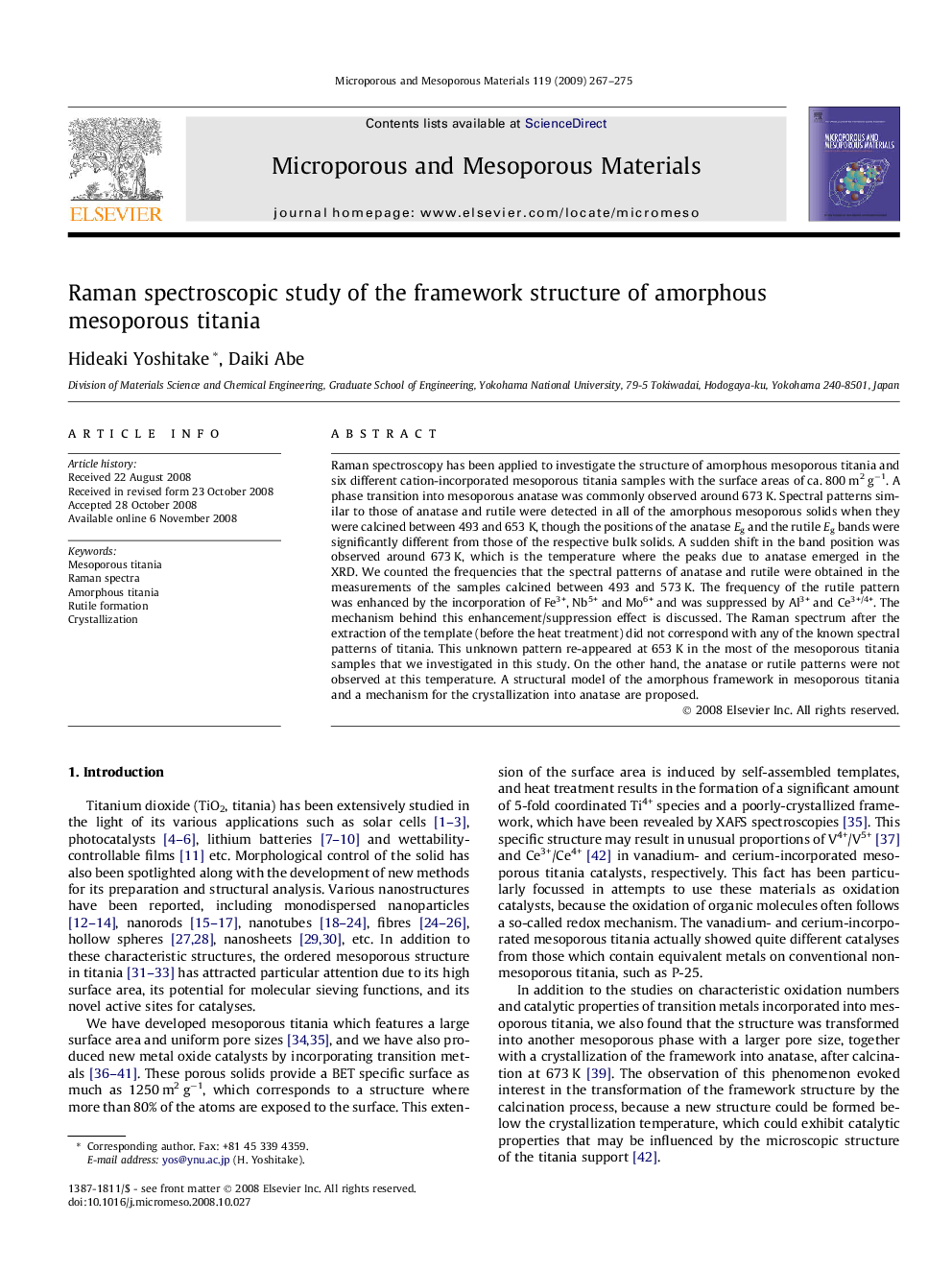| Article ID | Journal | Published Year | Pages | File Type |
|---|---|---|---|---|
| 76511 | Microporous and Mesoporous Materials | 2009 | 9 Pages |
Raman spectroscopy has been applied to investigate the structure of amorphous mesoporous titania and six different cation-incorporated mesoporous titania samples with the surface areas of ca. 800 m2 g−1. A phase transition into mesoporous anatase was commonly observed around 673 K. Spectral patterns similar to those of anatase and rutile were detected in all of the amorphous mesoporous solids when they were calcined between 493 and 653 K, though the positions of the anatase Eg and the rutile Eg bands were significantly different from those of the respective bulk solids. A sudden shift in the band position was observed around 673 K, which is the temperature where the peaks due to anatase emerged in the XRD. We counted the frequencies that the spectral patterns of anatase and rutile were obtained in the measurements of the samples calcined between 493 and 573 K. The frequency of the rutile pattern was enhanced by the incorporation of Fe3+, Nb5+ and Mo6+ and was suppressed by Al3+ and Ce3+/4+. The mechanism behind this enhancement/suppression effect is discussed. The Raman spectrum after the extraction of the template (before the heat treatment) did not correspond with any of the known spectral patterns of titania. This unknown pattern re-appeared at 653 K in the most of the mesoporous titania samples that we investigated in this study. On the other hand, the anatase or rutile patterns were not observed at this temperature. A structural model of the amorphous framework in mesoporous titania and a mechanism for the crystallization into anatase are proposed.
